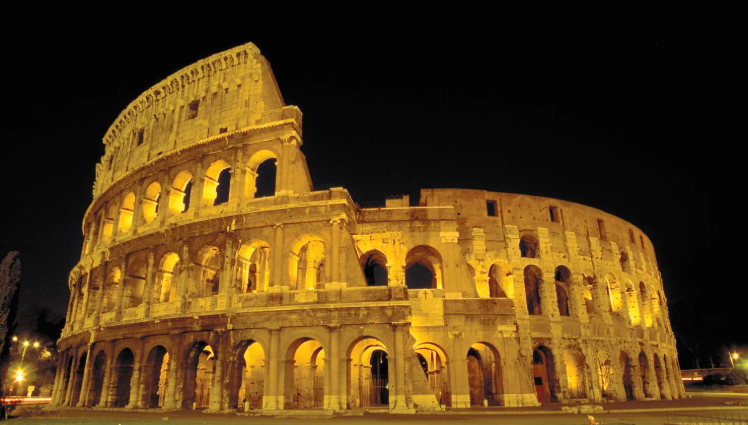
Top 3 Rome Travel Attractions Nobody Should Miss
Rome is a gorgeous city with a rich history that dates back thousands of years. From the iconic Colosseum to the stunning Trevi Fountain, there is no shortage of amazing sights to see in Rome. The city is also known for its delicious cuisine, with authentic Italian pasta, pizza, and gelato available on every corner. Whether you’re a history buff, a foodie, or just looking to explore a beautiful city, Rome has something for everyone. Additionally, Cathay Pacific provides a flight service from Manila To Rome making it easier than ever to visit this incredible destination.
In addition to its historical sites and delicious food, Rome is also home to some of the most beautiful artwork in the world. The Vatican Museums house an incredible collection of paintings, sculptures, and other works of art, including the iconic Sistine Chapel ceiling painted by Michelangelo. The city’s many piazzas offer the perfect place to relax and people-watch, while the narrow, cobblestone streets are ideal for leisurely strolls. With its perfect combination of history, culture, and charm, Rome is a must-visit destination for any traveler. And thanks to Cathay Pacific’s flight service from To Rome getting to Rome has never been easier.
Pantheon
The Pantheon in Rome is one of the most iconic and well-preserved buildings from ancient Roman times. Built in 126 AD by Emperor Hadrian, the Pantheon is a remarkable architectural feat that still amazes visitors to this day. One of the most striking features of the Pantheon is its dome, which is the largest unreinforced concrete dome in the world. The oculus, or opening at the top of the dome, allows sunlight to filter into the building, creating a stunning display of natural light.
The Pantheon was originally built as a temple to the Roman gods, with each of the seven niches around the rotunda dedicated to a different deity. However, in the 7th century, the Pantheon was consecrated as a Christian church and has been used as such ever since. The interior of the Pantheon is beautifully decorated with marble, carvings, and statues, creating a sense of grandeur and awe-inspiring beauty.
One of the most interesting aspects of the Pantheon is its perfect spherical shape, with the height of the rotunda equalling the diameter of the dome. This architectural feat was achieved through the use of mathematical calculations and precise engineering, showcasing the advanced skills of the ancient Romans. The Pantheon has inspired countless architects and builders over the centuries and continues to be a symbol of architectural excellence.
See also: Transform Your Home with Bespoke Fitted Bathrooms – The QA Way
Today, the Pantheon remains a popular tourist attraction in Rome, drawing visitors from all over the world who marvel at its beauty and history. Whether you are interested in ancient Roman architecture, religious history, or simply appreciate beautiful buildings, the Pantheon is a must-see destination in Rome. Its timeless elegance and remarkable design are a testament to the skill and ingenuity of the ancient Romans, and a reminder of the enduring legacy of their civilization.
Colosseum
The Colosseum, also known as the Flavian Amphitheatre, is an iconic symbol of ancient Rome and one of the most famous landmarks in the world. This massive structure was built over 2,000 years ago by Emperor Vespasian and his son Titus, and it was used for gladiatorial contests, animal hunts, and other public spectacles. Today, the Colosseum attracts millions of visitors each year who come to marvel at its impressive architecture and learn about its fascinating history.
One of the most striking features of the Colosseum is its size and scale. The amphitheatre could hold up to 80,000 spectators, making it the largest such structure in the Roman Empire. Its elliptical shape and tiered seating allowed for excellent visibility from every seat, ensuring that everyone in the audience could witness the bloodthirsty battles and other events that took place in the arena.
Another highlight of the Colosseum is its advanced engineering and construction techniques. The use of concrete and brick faced with travertine stone allowed the Romans to build such a massive and durable structure that has stood the test of time. The Colosseum was also equipped with a sophisticated system of ramps, tunnels, and trapdoors that enabled the quick and efficient movement of gladiators, animals, and scenery during the games.
Today, visitors to the Colosseum can explore its interior and learn about the history and significance of this ancient monument through informative displays and exhibitions. Guided tours are available to provide in-depth insights into the architecture, engineering, and social context of the Colosseum, allowing visitors to gain a deeper appreciation for the legacy of this remarkable structure. Whether you are a history enthusiast, architecture buff, or simply a curious traveler, a visit to the Colosseum is sure to be a memorable and enlightening experience that will transport you back in time to the days of ancient Rome.
Spanish Steps
The Spanish Steps in Rome are not just a staircase, but a symbol of elegance and beauty that has captured the hearts of millions of tourists from around the world. Built in the early 18th century, this stunning baroque masterpiece is one of the most recognizable landmarks in Rome. The 135 steps cascade down in a grand sweeping design, leading from the Piazza di Spagna to the Trinità dei Monti church at the top. The surrounding area is a hub of chic boutiques, trendy cafes, and luxury hotels, making it a favorite spot for shopping and people-watching.
Visitors flock to the Spanish Steps not only to marvel at the architectural grandeur, but also to soak in the vibrant atmosphere of this bustling square. During the day, the steps are filled with locals and tourists enjoying a leisurely stroll or sitting and basking in the sun. At night, the steps come alive with street performers, musicians, and artists creating a lively and entertaining scene. The Spanish Steps also provide a perfect vantage point to take in panoramic views of the city, offering a breathtaking backdrop for memorable photos.
The Spanish Steps have long been a magnet for artists, writers, and poets seeking inspiration from its beauty and charm. In fact, the famous English Romantic poet John Keats lived in a house adjacent to the steps, where he composed some of his most renowned works. The Keats-Shelley House, now a museum dedicated to the Romantic poets, stands as a testament to the lasting influence of the Spanish Steps on the creative minds of the past and present.
Whether you’re in search of a romantic rendezvous, a cultural immersion, or simply a peaceful retreat from the hustle and bustle of the city, the Spanish Steps offer a unique and enchanting experience that will leave a lasting impression on your heart and mind. Don’t miss the chance to be a part of the timeless allure and magic of the Spanish Steps in Rome.




